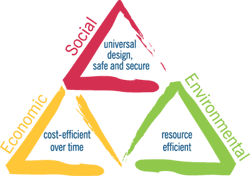Organic Gardening and Farming
Organic gardening is fundamentally different from in-organic gardening. Organic methods operate within life-enhancing paradigms, where as non-organic methods typically leave unhealthy residues and build up in our soils and water. Furthermore, non-organic methods focus primarily on 3 elements: Nitrogen, Phosphorus, Potassium. Organic methods bring a much wider, border spectrum of essential nutrients to your soil. For example, we use rock dust flour which contain over 60 minerals.
The old rule is you don’t mess with Mother Nature. So, when we utilize Mother Natures natural elements, we start with a solid basis for life. Incorporating raw compost, rock minerals, oyster shell calcium were appropriate. Your soils will rapidly show positive changes with proper flower development, brighter leaves, less disease, and fruit flavor of complete sweetness.
BioIntensive
BioIntensive farming utilizes small spaces to create a larger value.
Some methods are:
- Double digging; fracturing deeply to promote root growth
- Weighting branches past 45º to double and triple fruit production
- Planting trees on slope close to 45º to increase production
Permaculture
Permaculture is both a lifestyle ethic as well as a design system. Utilizing a ‘systems thinking approach’ to create sustainable human habitats, we mimic nature’s patterns (ecology).
At Mindful Landscapes, we follow the best permaculture practices for your project. Examples are:
- Purchasing locally when possible
- Organic plants, materials, and soils
- On-site mulching
- Sheet mulching; Using layers of brown and green materials to suppress weeds
- Swales
- Thoughtful and protracted observations
- All landscape edges are examined and are crucial to planning
- Smart use of on-site resources

“What permaculturists are doing is the most important activity that any group is doing on the planet.”
– Renowned environmentalist Dr. David Suzuki

Permaculture literally stands for Permanent Agriculture
Permaculture can be described as a “moral and ethical design system applicable to food production and land use,” as well as community design. It seeks the creation of productive and sustainable ways of living by integrating ecology, landscape, and organic gardening as well as architecture, agro-forestry, green or ecological economics, and social systems. The focus is not just on these elements, but also on the relationships created among them by the way they are placed together; the whole becoming greater than the sum of its parts.
Some of our practices
-
- Easily Maintained
We design landscapes that are plant rich – more plants means less weeds! - Resource Saving
We design and install all varieties of irrigation systems with state-of-the-art products. - Thinking Outside the Box
All of our designs and maintenance programs consider the outside relationships that effect your land beyond your site’s property line. - High Performance Planting
We want your entire landscape operating at it’s peak potential. Whether it’s food, flowers or foliage, we want your private oasis as lush as it can be. - Native Planting
- Easily Maintained
Many natives are drought tolerant and/or less maintenance because they naturally thrive in your area without extra fuss, worry, or additional maintenance.
- Swales
Swales help capture and store water on your land that can otherwise cause flooding, erosion, and other drainage problems. By sinking and storing the water on your land before it runs off (taking your soil with it) you are also building underground water reserves that can help in times of drought – both saving the environment and saving you money at the same time.
